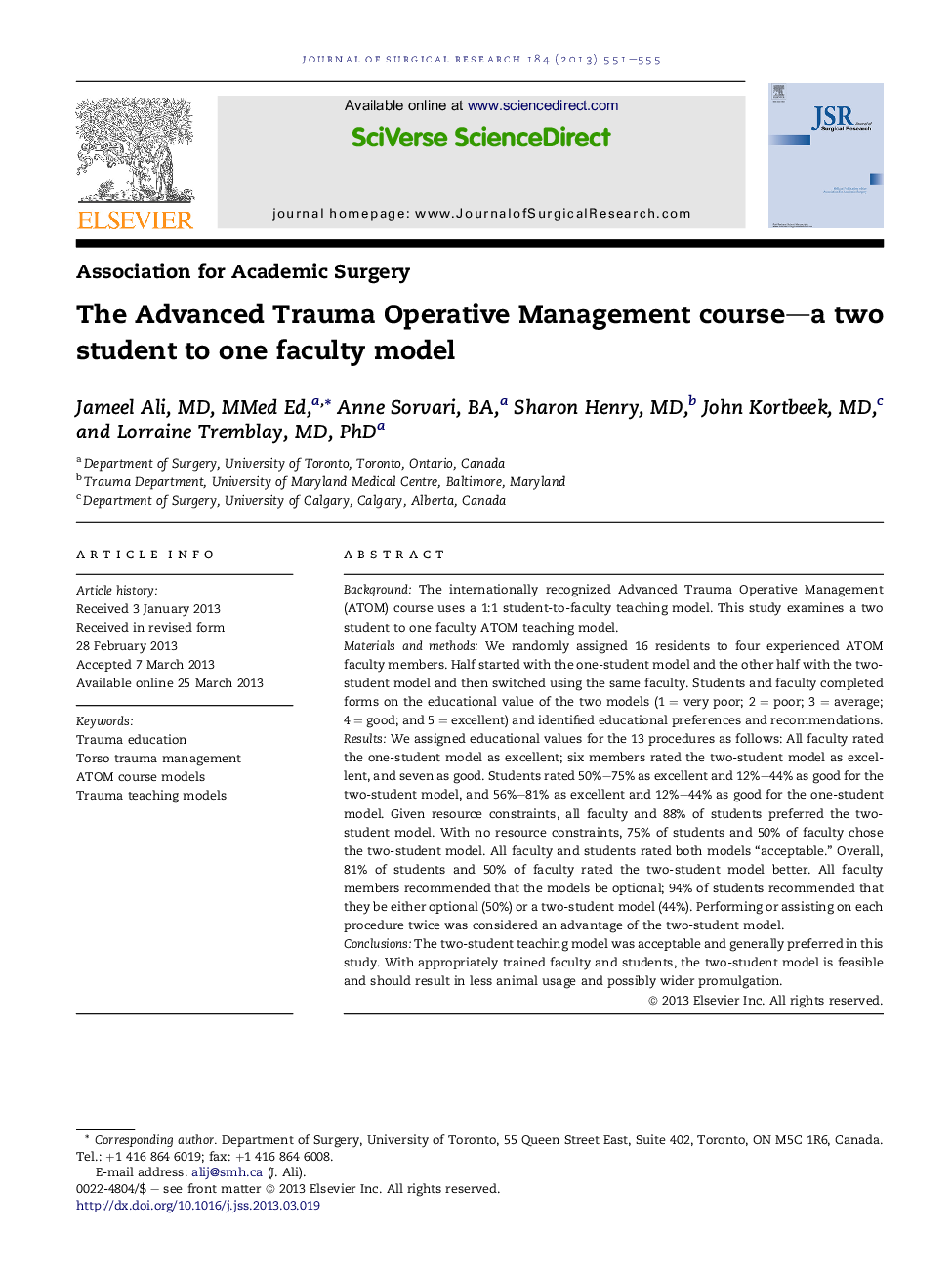| Article ID | Journal | Published Year | Pages | File Type |
|---|---|---|---|---|
| 4300648 | Journal of Surgical Research | 2013 | 5 Pages |
BackgroundThe internationally recognized Advanced Trauma Operative Management (ATOM) course uses a 1:1 student-to-faculty teaching model. This study examines a two student to one faculty ATOM teaching model.Materials and methodsWe randomly assigned 16 residents to four experienced ATOM faculty members. Half started with the one-student model and the other half with the two-student model and then switched using the same faculty. Students and faculty completed forms on the educational value of the two models (1 = very poor; 2 = poor; 3 = average; 4 = good; and 5 = excellent) and identified educational preferences and recommendations.ResultsWe assigned educational values for the 13 procedures as follows: All faculty rated the one-student model as excellent; six members rated the two-student model as excellent, and seven as good. Students rated 50%–75% as excellent and 12%–44% as good for the two-student model, and 56%–81% as excellent and 12%–44% as good for the one-student model. Given resource constraints, all faculty and 88% of students preferred the two-student model. With no resource constraints, 75% of students and 50% of faculty chose the two-student model. All faculty and students rated both models “acceptable.” Overall, 81% of students and 50% of faculty rated the two-student model better. All faculty members recommended that the models be optional; 94% of students recommended that they be either optional (50%) or a two-student model (44%). Performing or assisting on each procedure twice was considered an advantage of the two-student model.ConclusionsThe two-student teaching model was acceptable and generally preferred in this study. With appropriately trained faculty and students, the two-student model is feasible and should result in less animal usage and possibly wider promulgation.
